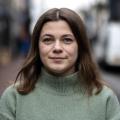
A team of archaeologists using drones to capture and survey a heritage site have been shortlisted for an award.
The Seaford Head project is a pilot study using drones and 3D modelling to map the site to help preserve it for future generations.
Archaeology South-East, a branch of UCL’s archaeology department leading the project say the loss of the site due to coastal erosion is “inevitable”, but that this pilot helps record the erosion in advance.
The Council for British Archaeology, which has nominated the project for the Archaeological Achievement Award said the Seaford Head Project’s report “provides a template for similar projects.”
Drones were used to take hundreds of photographs of the site and enabled the researchers to picture and record otherwise inaccessible or difficult-to-reach places.
The team were then able to identify potential archaeological features in the high cliff section which is roughly 80 metres high.
The Seaford Head Project is a collaboration, with South Downs National Park and Historic England providing funding, and additional support from Seaford Town Council.
The project has been shortlisted for an award in the Innovation category, where they are up against projects using artificial intelligence to detect sites and augmented reality reconstructions of archaeological sites.
One of the competitors, Dig It Scotland, recreates archaeological sites using the video game Minecraft.
“It’s fantastic to get recognition for the project and hopefully take it and other discoveries we make to an even wider audience,” said Jon Sygrave, project manager for Archaeology South-East.
The headland site of the project includes an Iron Age hillfort and provides stunning views of the Seven Sisters cliffs.
It has seen significant cliff collapses in the last year, and the erosion is expected to increase in frequency and severity with predicted rises in rainfall and storm events related to climate change.

Mr Sygrave said the project stands out for innovation because of the wide range of techniques used.
“We have carried out varied public outreach alongside our practical techniques. We are record what is being lost so we can get better at involving the public in why such sites are so special and what they have to tell us about our past and our changing future.”
The awards ceremony will be held in Dublin Castle on Tuesday, November 29.



Comments: Our rules
We want our comments to be a lively and valuable part of our community - a place where readers can debate and engage with the most important local issues. The ability to comment on our stories is a privilege, not a right, however, and that privilege may be withdrawn if it is abused or misused.
Please report any comments that break our rules.
Read the rules hereLast Updated:
Report this comment Cancel